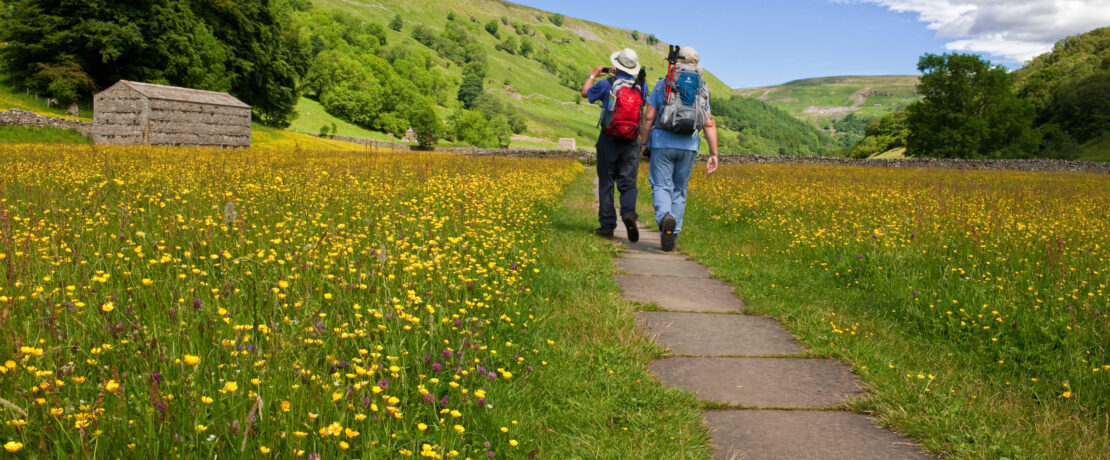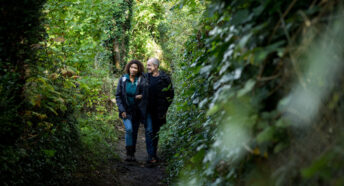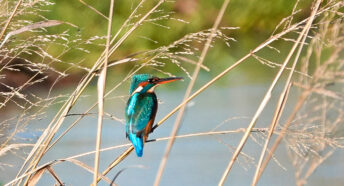The magic of meadows
Created to feed livestock, meadows provide a stunning habitat for wildlife – and labours of love are returning many to their former glories, says Iain Parkinson.
Just like the botanical arrangement of a wildflower, a meadow is an intricate and beautiful design where form and function are subtly interwoven. Full of colour and character, these flowery worlds are wonderful places to see an abundance of plants, insects, birds and other wildlife; but they are not quite as wild as first meets the eye. Meadows are an ancient part of the agricultural landscape, managed by generations of farmers to produce hay to feed their livestock.
The perfect antidote
The annual cycle of hay cutting followed by livestock grazing creates an ecological balance where a dazzling array of flowers, grasses and other species have learnt to coexist as part of a tightly woven plant community. A meadow’s beauty, then, is derived from its utility.
Yet with livestock farming on the wane and modern methods of producing winter fodder, such as silage, replacing traditional hay production, meadows have found themselves marginalised. Pushed to the extremities by a rapidly changing agricultural landscape, surviving examples are now increasingly rare – but those that remain still have the power to capture hearts and minds.
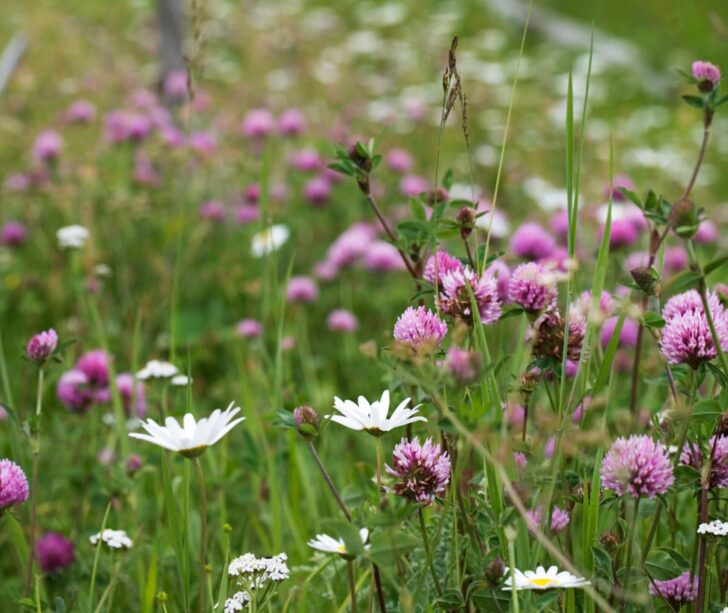
In recent times there has been a welcome shift in public perception, with the more naturalistic design of flowery grasslands becoming an increasingly acceptable sight in our parks and gardens, and alongside our highways and byways.
This is good news for nature, but it’s also good news for people. There are many benefits to our health and wellbeing when we spend time in the company of nature. The classic form of a hay meadow, where the abstract designs of nature repeat over and over again at varying degrees of complexity and regularity, is the perfect antidote to the stresses and strains of modern life. A deep connection between humans and grasslands lies latent in all of us, but given a chance, it resurfaces to heighten the senses and soothe the soul.
Regional identities
At a glance, one meadow might look much the same as another, but closer inspection at a species level reveals countless expressions of regional identity. For example, the well-drained fertile soils of upland hay meadows support a very distinctive flora, including a number of rare and threatened plants such as melancholy thistle, globeflower and the dainty wood cranesbill.
In contrast, the heavy clays of some lowland meadows, like those of the High Weald of Sussex, are often dominated by ‘tough as old boots’ species such as common knapweed and dyer’s greenweed, the latter being an important food plant for a range of scarce and threatened micro-moths and other insects.
Sandwiched between the upland and lowland meadows are the colourful grasslands of the central floodplains. The plant communities of floodplain meadows are beautifully adapted to their dynamic environment and include a range of specialised moisture-loving plants, such as great burnet, meadowsweet and devil’s-bit scabious. By virtue of their enduring character, surviving examples of floodplain meadows, such as those of the Severn and Avon Vales, demonstrate a resilience to change that owes much to the careful and constant stewardship afforded to them over many centuries by the local farming community.
Water worlds
Water is a key factor in shaping the character of meadow plant communities, and this is certainly true in the case of traditional water meadows such as Harnham Water Meadows in Salisbury, Wiltshire, and Wicksteed Water Meadows in Kettering, Northamptonshire. What distinguishes a water meadow from other wet meadows is their specially engineered systems of sluices, channels, ridges and hatches, designed to control the spread of nutrient-rich deposits over the sward and increase the annual yield of hay. The intensive way in which water meadows were managed in the past provides an excellent example of the importance people placed on hay production. Without this most basic of commodities, livestock would have lost condition or perished in the winter, severely impacting lives and livelihoods.
Ever-changing tapestries
Despite the rapid demise of meadows over the past century, a few ancient examples survive today, providing a link to the past but also hope for the future. Many of these – such as North Meadow in Cricklade, Wiltshire, where tens of thousands of snake’s-head fritillary flowers herald the spring, or the stunning upland hay meadows of Muker in Swaledale, North Yorkshire – are protected as Sites of Special Scientific Interest or preserved for posterity as National Nature Reserves.
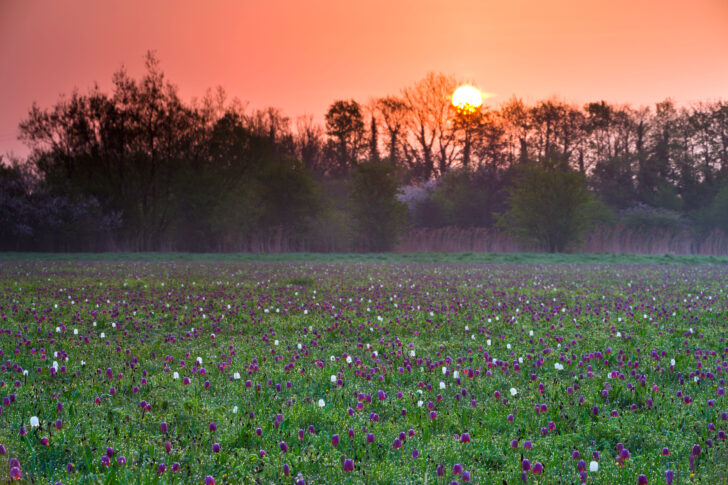
These grassland gems are priceless, as hiding deep within their soils and swards are the ecological blueprints that can help us to build a better future for those that remain. Attempting to recreate the ever-changing tapestry of a meadow, along with its microcosm of life, is a complex and technical task. However, despite comprehensive research on the subject, the pursuit of meadow making will never be an exact science, but more a labour of love.
About the author
Iain Parkinson is the head of landscape and horticulture at Wakehurst, Kew’s wild botanic garden. Actively involved in creating and restoring species-rich grassland around the country, he is the author of Meadow: The intimate bond between people, place and plants.
